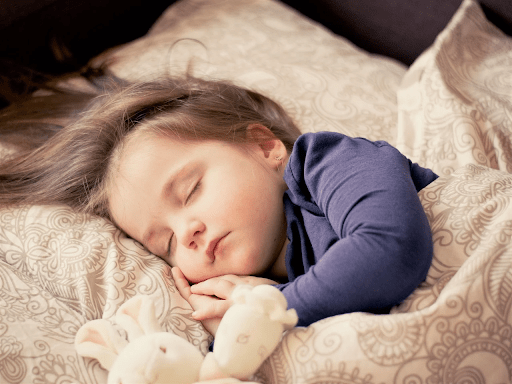
Helping Children With Sensory Issues Sleep
Sleep is one of nature’s greatest gifts. It replenishes the body, gives rest to the mind, and re-energizes the spirit. And yet sleep is not often something that we give much thought to unless we, or someone we love, must try to endure without it.
Unfortunately, for many children with sensory processing disorders (SPD), sleep can be as elusive as it is necessary. And not only can prolonged and chronic sleep deprivation wreak havoc on the physical, mental, and emotional health of the child, but it can be equally devastating for family members.
After all, caring for a child with SPD can be an exhausting endeavor in the best of circumstances. When parents and caregivers are deprived of the essential rest they need, the ramifications can be severe, leading to accidents, physical illness, and even depression and anxiety.
The good news, though, is that there is hope. No matter how significant your child’s sensory processing challenges may be, it is possible to help them get the consistent, nourishing sleep they (and you) need and deserve.
Consider Your Child’s Unique Needs
Every child is unique, and that means that their sensory processing challenges will be as individualized as they are. Helping your child get to sleep, and stay asleep, at night begins with understanding how their SPD is impacting their nighttime ritual, their ability to self-soothe, drift into sleep, and continue sleeping throughout the night
For example, many children have challenges with auditory overstimulation. The slightest noise, the minutest sound that might be virtually undetectable for you, can prevent your child from falling asleep or can wake them from even a sound sleep.
If your child is particularly sensitive to sounds in this way, then investing in a pair of noise-canceling headphones can be the ideal solution for helping your little one to block out the world and sail off into dreamland.
Setting the Scene for Sleep
One of the most formidable challenges that parents may face in helping their child to get consistent, healthy sleep is that the bedroom may not be exactly conducive to rest. Indeed, your kids probably do a lot of living in their bedrooms, from watching TV and playing video games to listening to music and doing schoolwork.
For many families, indeed, that’s just a fact of modern life. But when your child is so used to being physically, mentally, and emotionally stimulated in so many ways in their bedroom, it can be difficult both for body and mind to settle down to sleep when the time comes.
This is why it’s important to create the right physical environment to help your child relax and settle into sleep. For instance, you might outfit the bed with fabrics and textures that your child finds especially soothing, such as plush and velvet throws or faux fur and soft cotton. Large fluffy pillows, cuddly stuffed animals, and even weighted blankets can also help to provide that tactile comfort your child needs to sink into sleep.
Be Mindful of the Tech
When you’re trying to help your little one settle in for the night, you must pay attention to the tech that’s in their room. As handy, and as essential, as these gadgets can be, they can also be profoundly disruptive to your child’s sleep.
For instance, electronic devices of almost every stripe, from smartphones to computers to tablets to televisions, emit blue light rays. Those rays have been shown to contribute to insomnia, particularly by interfering with the brain’s ability to produce and absorb melatonin.
So when you’re creating a sleep sanctuary for your child, one of the first steps is to turn off as many gadgets as you can as early in the evening as possible. Then, invest in a blue light filter for every device.
Once you’ve done this, though, you’re not necessarily finished with the tech. As damaging as some of these devices may be to the quality and consistency of sleep, some tech tools can actually be highly beneficial for your child’s sleep. For instance, there is a wide range of smartphone apps that can help your child self-soothe, fall asleep, and remain asleep.
These can be purchased at low or no cost based on your child’s particular needs, such as white noise apps and meditation apps.
Establish a Bedtime Ritual
Very few of us, whether we have a sensory processing disorder or not, can simply jump into bed and be ready to fall asleep before our head hits the pillow. And yet, in our chaotic lives today, that seems all too often to be what we expect both for ourselves and our children.
The reality, though, is that it takes time to unwind and ease into sleep. And that’s why the importance of a healthy bedtime ritual cannot be overstated. How you and your child choose to craft the ritual will very much depend on your child’s unique needs. But what matters is to establish a familiar, comforting and comfortable routine that will signal to your child’s body and mind that it is time for rest.
This might involve, for instance, a light snack, followed by a warm, aromatherapeutic bath and a favorite bedtime story. You might even help your child walk through a guided meditation regimen, helping them to release the anxieties of the day and the worries for tomorrow as they move through a positive, comforting vision of the night ahead and the day to come. After all, worry and anxiety are great thieves of peace and rest. Guided meditation can be a powerful tool for helping your child release those disturbing and disruptive emotions.
The Takeaway
Sleep is a gift that all too often we don’t sufficiently appreciate until it’s gone. Children with sensory processing disorders frequently struggle to get healthy, consistent sleep, which can be devastating both for the child and their family. However, there are important steps that can be taken to help your child settle into the nourishing rest they need and deserve.






